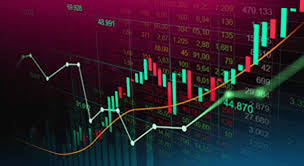
What is Forex Trading?
Forex trading, or foreign exchange trading, is the process of buying and selling currencies in a decentralized global market. The forex market is one of the largest and most liquid financial markets in the world, with an average daily trading volume exceeding $6 trillion. Traders and investors engage in currency trading for various reasons, including profit generation, hedging against currency risk, and investment diversification. For a deeper insight into Forex trading, visit what is trading forex fx-trading-uz.com.
Key Concepts of Forex Trading
To grasp the volume and importance of Forex trading, it’s essential to familiarize yourself with some key concepts:
1. Currency Pairs
Forex trading operates on the exchange of currency pairs. Each currency has a code (ISO 4217 format), and they are traded in pairs, such as EUR/USD, which represents the Euro against the U.S. Dollar. The first currency is the base currency, and the second is the quote currency. The price of a currency pair indicates how much of the quote currency is needed to purchase one unit of the base currency.
2. Pips and Lots
A pip is the smallest price move that a given exchange rate can make based on market convention. Most currency pairs use a standard of four decimal places, with a pip being the last decimal. For example, if the EUR/USD moves from 1.1150 to 1.1151, it has moved one pip. Lots refer to the size of the trade; a standard lot is 100,000 units of the base currency, but it can also be traded in mini lots (10,000) and micro lots (1,000).
3. Leverage
Leverage allows traders to control larger positions with a smaller amount of capital. For instance, with 100:1 leverage, a trader can control a $100,000 position with only $1,000. While leverage amplifies potential profits, it also increases the risk of losses, so it should be used with caution.
How Does Forex Trading Work?
The Forex market operates 24 hours a day, five days a week, with trading sessions in major financial centers around the world, including London, New York, Tokyo, and Sydney. Traders can buy or sell currencies based on their analysis of various factors, including economic indicators, political events, and market sentiment.
The goal of Forex trading is to speculate on currency movements, where traders buy a currency pair expecting the price will rise or sell it expecting the price will fall. Profit is made from the difference between the buying and selling prices, commonly known as the spread.
Types of Forex Trading
Forex trading can be categorized into several types:
1. Day Trading
Day trading involves opening and closing trades within the same trading day. Day traders aim to profit from small price movements and typically leverage short-term momentum.
2. Swing Trading
Swing traders hold positions for several days or weeks to capture potential price swings. This strategy requires a more extended market analysis and patience to see trades come to fruition.
3. Scalping
Scalping is a high-speed trading strategy where traders aim to profit from small price changes. Scalpers usually enter and exit trades within seconds or minutes, requiring quick decision-making and execution.
4. Automated Trading

Automated trading, or algorithmic trading, uses pre-programmed algorithms to execute trades based on specific criteria. This approach can eliminate emotional decision-making and allows for faster execution of trades.
Benefits of Trading Forex
Forex trading offers several advantages that attract both novice and experienced traders:
1. High Liquidity
The vast volume of transactions in the Forex market ensures high liquidity, allowing traders to enter and exit positions with ease. This translates into tight spreads and minimal slippage.
2. Accessibility
With the rise of online trading platforms, Forex trading has become accessible to a broader audience. Traders can operate entirely from their computers or smartphones with an internet connection.
3. Flexibility
The 24/5 trading environment of the Forex market allows traders to trade at their convenience, accommodating various schedules and time zones.
4. Low Costs
Compared to other financial markets, transaction costs in Forex trading are relatively low, especially with the absence of centralized exchanges and lower commission fees from brokers.
Challenges in Forex Trading
While Forex trading offers numerous benefits, it also comes with its share of challenges that traders must navigate:
1. Market Volatility
The Forex market can experience sudden and extreme price movements, driven by economic news or geopolitical events. While volatility can present trading opportunities, it also increases risk.
2. Psychological Factors
Emotions such as fear and greed can significantly impact trading decisions. Maintaining discipline and sticking to a well-defined trading plan is crucial for success.
3. Complexity of Analysis
The multitude of factors influencing currency prices can make market analysis complex. Traders must stay informed about economic indicators, central bank policies, and global events.
Conclusion
Forex trading presents an exciting opportunity for individuals looking to enter the financial markets. With a deep understanding of the market, effective trading strategies, and risk management techniques, traders can position themselves for success. Whether you are a newcomer or an experienced trader, continuous education and practice are essential components of thriving in this dynamic environment.
As you embark on your Forex trading journey, remember to stay informed, be disciplined, and always perform due diligence. The Forex market can be a powerful tool for wealth creation, provided it is approached with the right mindset and strategy.
